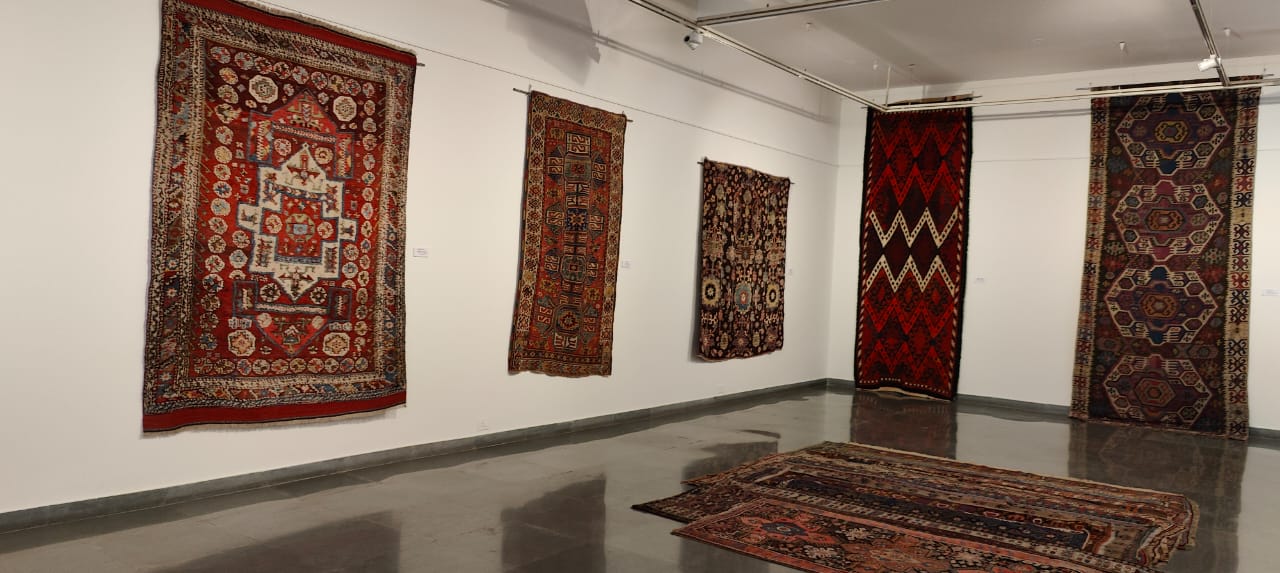If rugs and carpets are your calling, then the “Carpet Stories from the Old Silk Roads” exhibition at Gallery Sumukha must be on list. This exhibtion has rare 19th century tribal village and nomadic carpets from Central Asia, the Caucasus mountains and other exotic regions. The carpets are from the collection of famous carpet connoisseur Danny Mehra.

There are close to 70 carpets on display and are from as far as Persia, Turkey, Armenia, Azerbaijan, Georgia, Uzbekistan and Kyrgyzstan. All of them were generally woven by women. They were at the forefront of producing these masterpieces, mostly for personal use. The men sheared the sheep, goats or camels for the wool and did the dyeing, while the women carded and spun the wool yarn and wove the designs from their imagination.


Their Shamanistic views translated their surrounding objects into icons and patterns. For example people, animals, birds, mountains, gardens, flowers etc have all been translated onto these carpets. The weavings were either flat kilims (like durries) which have two dimensions-warp and weft; or carpets with a pile, i.e. the third dimension of a vertical knot that creates the soft cushiony surface.

According to Danny, most of these tribes were nomadic and moved as the seasons changed. Their horizontal looms were uprooted and moved along with the caravan of belongings. That is probably why a lot of these tribal carpets which are handmade are not cookie cutter or straight edged. They are aptly “perfectly imperfect”!


The carpets on display are between 100 to 200 years old and were actively used in the day to day lives of the homes and families they belonged to; whether on the floor, as curtains to divide the tent into living quarters, as beds and blankets, as storage bags for food and clothes etc.

According to Danny most of these weaves are long gone and the weaving techniques are nearly extinct. Danny with his remarkable collection ensures that these treasures are peserved and cared for. As part of this process, the carpets are soaked and washed, repaired and conserved.

He also mounts rare fragments on cloth and canvas to give them the respect they deserve as phenomenal work of art. As per Danny they try to do all this without changing the onginal intent of the weaver.


The exhibition is on from 25th October 15th November 2025 and is at Gallery Sumukha. Address: 24/10, BTS Depot Road, NGO Colony, Wilson Garden, Bengaluru, Karnataka 560027.
Disclaimer: This is NOT a sponsored post.


I love these carpets.
Yes Peggy, they are really beautiful:)
I had seen a video …These carpets after weaving … one guy use a spade kind of thing and removes one layer of carpet…. then whole design , shade, depth, changes …. that guy is master craftsman… perfect elegant finish he give like ur articles…..let god bless u with great enthusiasm and opportunities!!!
Yes the workmanship is really great. Thanks so much for your kind words:)